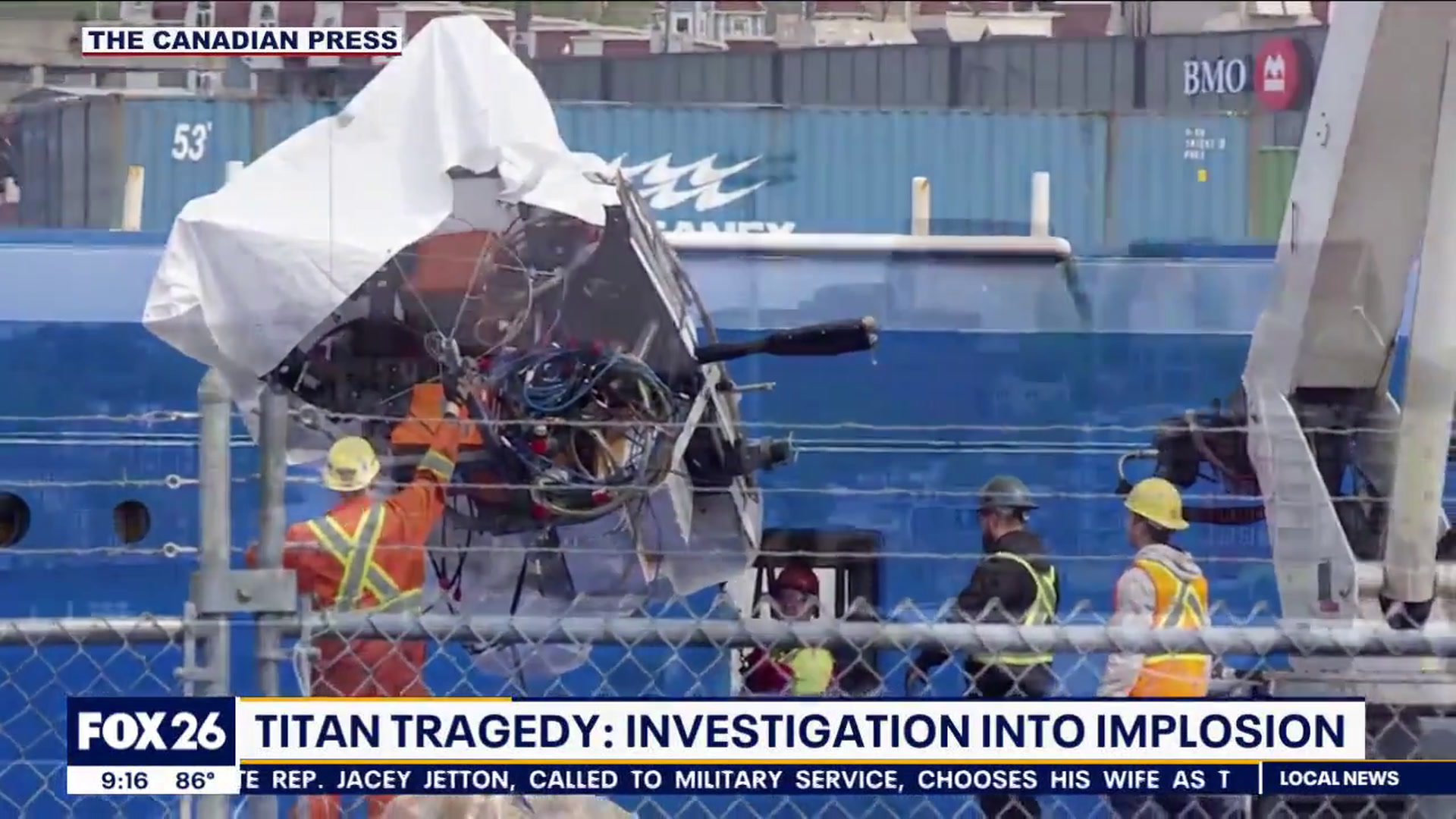Harriet Brewis
Jun 30, 2024
Titan submersible wreckage brought ashore after fatal implosion
content.jwplatform.com
A well-known biochemist has shared a compelling analysis of what “probably” caused the Titan submersible to implode.
Philip E. Mason, who goes by the username Thunderf00t on YouTube, said the main reason why the tiny OceanGate vessel failed was “so painfully simple” that he initially thought he must be making a “boneheaded mistake” in his calculations.
However, he acknowledged, his theory behind the sub’s tragic destruction contradicts the widely-reported suggestion that it was like a "Coke can" which suddenly burst due to the high surrounding pressure.
In a video posted on Monday, Mason suggested that “by far the most probable” cause of the catastrophe was a “single pinhole leak” which, at such a profound depth (the Titan is believed to have been 3,500 metres below sea level when contact was lost), would have been fatal.
It is worth noting that authorities have not yet confirmed the cause of the disaster, which claimed the lives of all five people on board, and Mason's conclusions are based on his own scrutiny of the available information and his particular expertise.
Sign up for our free Indy100 weekly newsletter
“So how quickly would a single pinhole leak sink a sub like this?” the YouTuber asked in his lengthy tutorial.
The answer, he pointed out, would greatly depend on the size of the leak.
If it measured one 10th of a millimetre by one 10th of a millimetre, the vessel would take several hours to go down, he said.
However, if the leak measured 1mm by 1mm, it would only take about 10 minutes for the sub to completely fill with water, and if it was 1cm by 1cm, around 10 seconds.
Mason then pointed out that water entering any sized leak at that depth would be transformed by the pressure into a sort of “cutting jet”.
“Faced with a soft material like plastic, a hair-sized leak would rapidly transform into [...] a millimetre-sized leak and then a centimetre-sized leak,” he explained.
Why the Titan sub failedwww.youtube.com
He then set out why it was likely that the Titan suffered such a leak, pointing to the materials used to make it.
He noted that most deep-sea submersibles essentially consist of a ball which is made up entirely of the same material, namely, metal.
“No joints, nothing fancy, maybe a couple of seals – one for where you get in and out of the sub and one for mounting a window,” he said.
And yet, the Titan was different.
“The ends were made up of a metal, titanium,” the YouTuber said. But the problem was that the middle of the sub wasn’t: it was made out of a carbon fibre composite.
The two materials have distinctly different compressibilities, with carbon fibre being much easier to squeeze than titanium.
“Having a joint where one side will expand or construct more than the other can be a real problem,” Mason stressed.
On the surface, when the different components of the vessel were sealed, it wouldn’t have mattered that the materials were different, he continued. However, once the Titan got down to its deepest point, the carbon fibre would have “wanted to shrink” while the titanium wouldn't have changed at all.
He then played a clip showing the creation of the sub, in which OceanGate CEO, Stockton Rush, admitted that the carbon fibre and titanium components were held together with a “peanut butter”-like “glue”.
Rush, who lost his life along with five others in the Titan disaster, then said ominously: “It’s pretty simple but if we mess it up, there's not a lot of recovery.”

Analysing the vessel's construction, Mason then said he was “honestly stunned it survived any dives”.
“The bottom line is the tube is more compressible than the end caps,” he continued.
“The only way this could have possibly worked is if they used some exotic alloy of titanium, like they do with bone replacement joints, and it doesn't look like they did that.”
Turning to what ultimately destroyed the Titan, he concluded: “What you're probably more looking at is the differential compression of the carbon fibre composite and the titanium resulting in a crack.”
In other words, “a pinhole leak, which would rapidly widen due to the rapid ingress of the water, further widening the crack and the rapid flooding of the sub in probably a fraction of a second.
“And when that water hammer hits the end of the sub, it's likely that the sub broke into pieces.”
Wrapping up his video, he said: “It's a mind-blowingly simple explanation based around the most likely failure points.”

Investigators are continuing to examine wreckage from the submersible which was recovered from the ocean floor at the end of June.
They have yet to determine the cause of the explosion and, last week, the Marine Board of Investigation’s (MBI) chairman Captain Jason Neubauer said: “There is still a substantial amount of work to be done to understand the factors that led to the catastrophic loss of the Titan and help ensure a similar tragedy does not occur again.”
Have your say in our news democracy. Click the upvote icon at the top of the page to help raise this article through the indy100 rankings.
Top 100
The Conversation (0)














